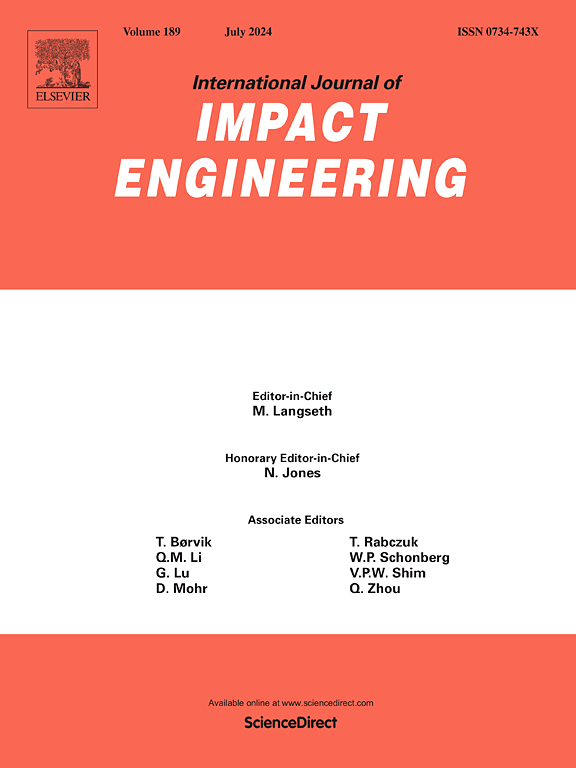Impact response of additively manufactured density-graded open-cell foams
IF 5.1
2区 工程技术
Q1 ENGINEERING, MECHANICAL
International Journal of Impact Engineering
Pub Date : 2024-09-19
DOI:10.1016/j.ijimpeng.2024.105127
引用次数: 0
Abstract
Additive manufacturing has made it possible to fabricate materials that were unachievable with traditional methods. This study focuses on understanding the deformation behavior and energy absorption mechanics of additively manufactured cellular materials with gradually varying densities. Foams have unique deformation behavior due to their intricate topology and composition, resulting in excellent energy dissipation capability. Varying the density can significantly influence their deformation response and improve energy absorption and impact resistance. Voronoi tessellation is employed to model the foams, as it effectively captures the cell morphology in foam structures and produces stochastic cellular topologies accurately. Resin-based additive manufacturing techniques are employed to fabricate cellular materials with varying density configurations for low-velocity and high-velocity impact experiments. The study demonstrates that density-graded foams effectively dissipate a broad spectrum of impact energies, surpassing uniform counterparts by transmitting reduced stress, especially at lower energy levels. This characteristic enhances their suitability for advanced energy absorption applications. The results also show that at high impact velocities, the direction of density gradation influences energy dissipation and peak stress transmission.
加成型密度分级开孔泡沫的冲击响应
快速成型技术使传统方法无法制造的材料成为可能。本研究的重点是了解密度逐渐变化的快速成型蜂窝材料的变形行为和能量吸收力学。泡沫材料因其复杂的拓扑结构和成分而具有独特的变形行为,因而具有出色的能量耗散能力。改变密度可显著影响其变形响应,改善能量吸收和抗冲击性能。由于 Voronoi tessellation 能有效捕捉泡沫结构中的细胞形态,并能准确生成随机细胞拓扑,因此我们采用 Voronoi tessellation 对泡沫进行建模。在低速和高速冲击实验中,采用基于树脂的增材制造技术制造具有不同密度配置的蜂窝材料。研究表明,密度分级泡沫能有效消散各种撞击能量,其传递的应力(尤其是较低能量水平的应力)比均匀的泡沫更小。这一特性提高了它们在高级能量吸收应用中的适用性。研究结果还表明,在冲击速度较高时,密度分级的方向会影响能量耗散和峰值应力传递。
本文章由计算机程序翻译,如有差异,请以英文原文为准。
求助全文
约1分钟内获得全文
求助全文
来源期刊

International Journal of Impact Engineering
工程技术-工程:机械
CiteScore
8.70
自引率
13.70%
发文量
241
审稿时长
52 days
期刊介绍:
The International Journal of Impact Engineering, established in 1983 publishes original research findings related to the response of structures, components and materials subjected to impact, blast and high-rate loading. Areas relevant to the journal encompass the following general topics and those associated with them:
-Behaviour and failure of structures and materials under impact and blast loading
-Systems for protection and absorption of impact and blast loading
-Terminal ballistics
-Dynamic behaviour and failure of materials including plasticity and fracture
-Stress waves
-Structural crashworthiness
-High-rate mechanical and forming processes
-Impact, blast and high-rate loading/measurement techniques and their applications
 求助内容:
求助内容: 应助结果提醒方式:
应助结果提醒方式:


